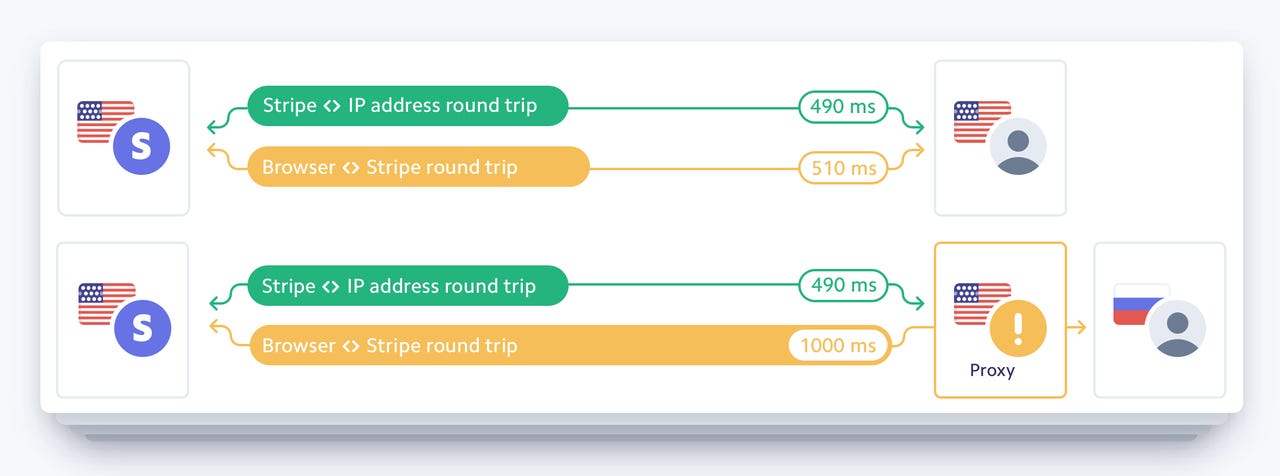Stripe rolls out new fraud prevention tools for the enterprise


Proxy detection is one of the hundreds of new signals that Stripe is adding to Radar, its machine learning-powered fraud detection tool.
Stripe is updating Radar, its machine learning-powered fraud prevention tool, with a new set of features expressly designed for the enterprise. Radar is also getting a performance boost, with new machine learning models that Stripe says should help businesses reduce fraud by an additional 25 percent.
Stripe introduced Radar about two years ago, using machine learning to analyze hundreds of different signals about each charge that happens on the Stripe payments platform. The company says that in 2017, Radar helped prevent $4 billion in attempted fraud.
The new bundle of features, packaged as Radar for Teams, is designed to help larger businesses keep granular control over their fraud prevention methods. For instance, Radar for Teams lets fraud prevention teams set custom risk thresholds at which to block payments. It also gives them a way to create lists of attributes (such as card numbers, emails, or IP addresses) to consistently block or allow. The product also lets teams use custom rules to influence Radar logic; for instance, a team could block all transactions above $1,000 when the IP country does not match the card's country.
Read also: What are the best Raspberry Pi alternatives? | Laundroid: A home robot that folds and sorts clothes | AI 'more dangerous than nukes': Elon Musk still firm on regulatory oversight | Executive's guide to implementing blockchain technology
Stripe customers already using Radar for Teams include Fitbit, Restocks, and Patreon.
Meanwhile, all Radar users will see an improvement in performance thanks to the addition of hundreds of new signals that distinguish legitimate customers from fraudulent ones. One new signal is proxy detection, which measures the round-trip time between Stripe and a customer browser, helping to determine whether a fraudster is using a proxy or VPN.
Stripe is also now updating and retraining Radar machine learning models on a daily basis.